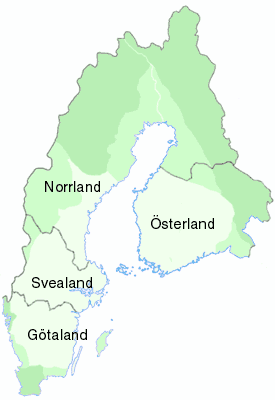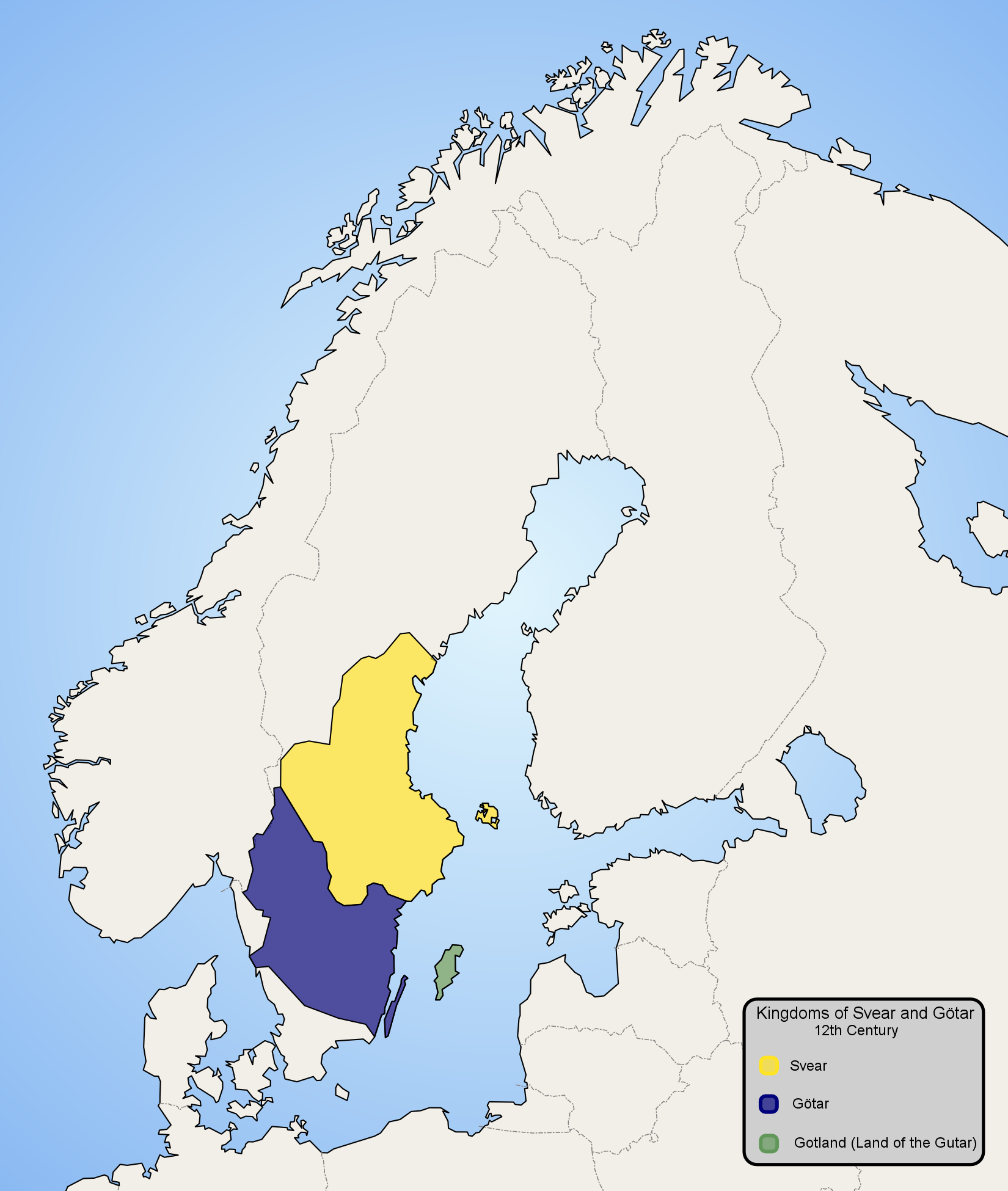|
Svealand
Svealand (), or Swealand, is the historical core region of Sweden. It is located in south-central Sweden and is one of the three historical lands of Sweden, bounded to the north by Norrland and to the south by Götaland. Deep forests, Tiveden, Tylöskog, and Kolmården, separated Svealand from Götaland. Historically, its inhabitants were called , from which is derived the English 'Swedes'. Svealand consists of the capital region Mälardalen in the east, Roslagen in the north-east, the former mining district Bergslagen in the center, and Dalarna and Värmland in the west. It includes an extensive archipelago of thousands of small islands in Södermanland and Uppland and has lakeshores on the four largest lakes in the country. In the interior, there are several ski resorts in the southern parts of the Scandinavian Mountains. Two large rivers run through Svealand. Klarälven originates in Norway and enters lake Vänern through Värmland, whereas Dalälven runs from ... [...More Info...] [...Related Items...] OR: [Wikipedia] [Google] [Baidu] |
Götaland
Götaland (; also '' Gothia'', ''Gothland'', ''Gothenland'' or ''Gautland'') is one of three lands of Sweden and comprises ten provinces. Geographically it is located in the south of Sweden, bounded to the north by Svealand, with the deep woods of Tiveden, Tylöskog and Kolmården marking the border. Götaland once consisted of petty kingdoms, and their inhabitants were called ''Gautar'' in Old Norse. However, the term mainly referred to the population of modern Västergötland. It is agreed that these were the same as the ''Geats'', the people of the hero Beowulf in England's national epic, ''Beowulf''. The modern state of Sweden started forming when some provinces of Götaland gradually became more and more politically intertwined with those of Svealand. This process can be traced back to at least the 10th century, and would continue for several hundred years. Other parts of modern Götaland were at that time either Danish or Norwegian. The province of Småland, with ... [...More Info...] [...Related Items...] OR: [Wikipedia] [Google] [Baidu] |

